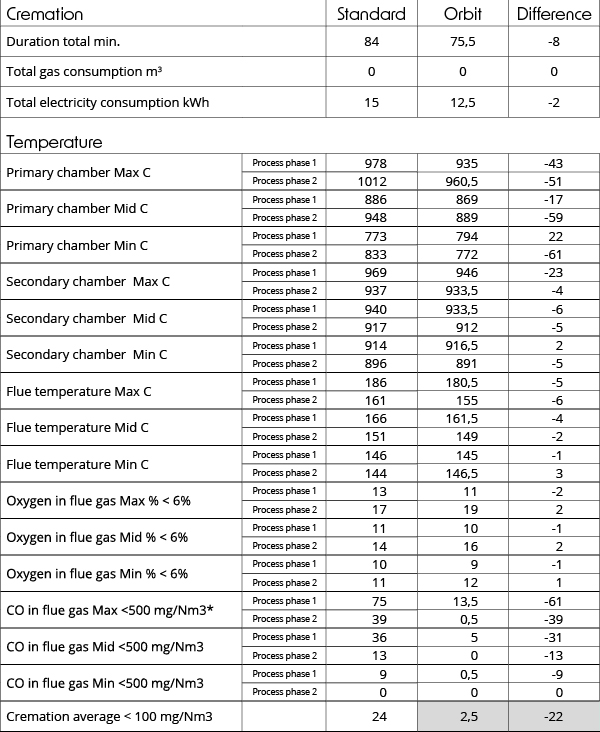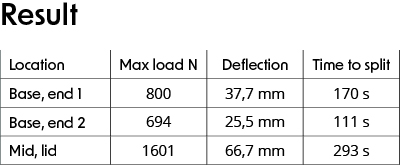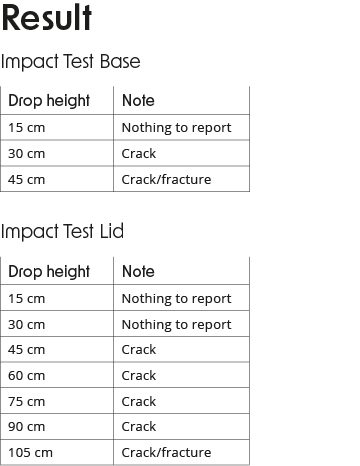Technical data
Technical data
80% less wood density is enough for an effective cremation
The Orbit coffin burns efficiently and faster without affecting the burn quality - on the contrary. The unique airy panel construction provides sufficient oxygenation in the initial combustion phase. For cremation performed on the Orbit coffin, the total burn time is reduced by almost 10 minutes compared to the average of 18 standard cremations.
In August and September 2020, 2 test cremations were carried out with a deceased person at Ballerup Crematorium in Denmark. Here, it was found that the Orbit coffin generally has lower values on all parameters. The cremation time for two cremations is reduced by an average of 8 minutes.
Cremation average <100 mg/Nm3 (Sulphur dioxide SO2) is down to 2.5. This is 22 lower than the average of 24 for 18 standard cremations in varying wooden coffins.

Further tests
A prepared coffin has been placed on battens supported under each end gable so that there is a free span of 200 cm. 150 kg of sandbags are placed inside and 5 litres of water are added. On day 8, an additional 5 litres of water are added. On day 16, the coffin was lifted and subjected to harsh treatment. This resulted in minimal twisting of the liner, but no splitting and no visible fluid extractions.
Further tests
A prepared coffin has been placed on battens supported under each end gable so that there is a free span of 200 cm. 150 kg of sandbags are placed inside and 5 litres of water are added. On day 8, an additional 5 litres of water are added. On day 16, the coffin was lifted and subjected to harsh treatment. This resulted in minimal twisting of the liner, but no splitting and no visible fluid extractions.
Static pressure test
Testing of the coffins was done by applying a single load to the base or lid of the coffins. This was done via a hydraulic cylinder, a piece of timber and through a Ø75 mm steel plate.
The load was applied at a constant deformation rate (oil flow to cylinder). When testing the base and lid, the coffins stood on 4 wooden blocks placed under each coffin corner during the tests.

Impact test
A 30 kg leather bag, Ø300 mm, filled with Ø3 mm glass beads is dropped from increasing heights onto the coffin lid and base. When testing lids, the coffins stood on a concrete floor during the tests and were thereby supported along all four sides throughout.
When testing the base, the coffins stood on 4 wooden blocks placed under each coffin corner during the tests.






